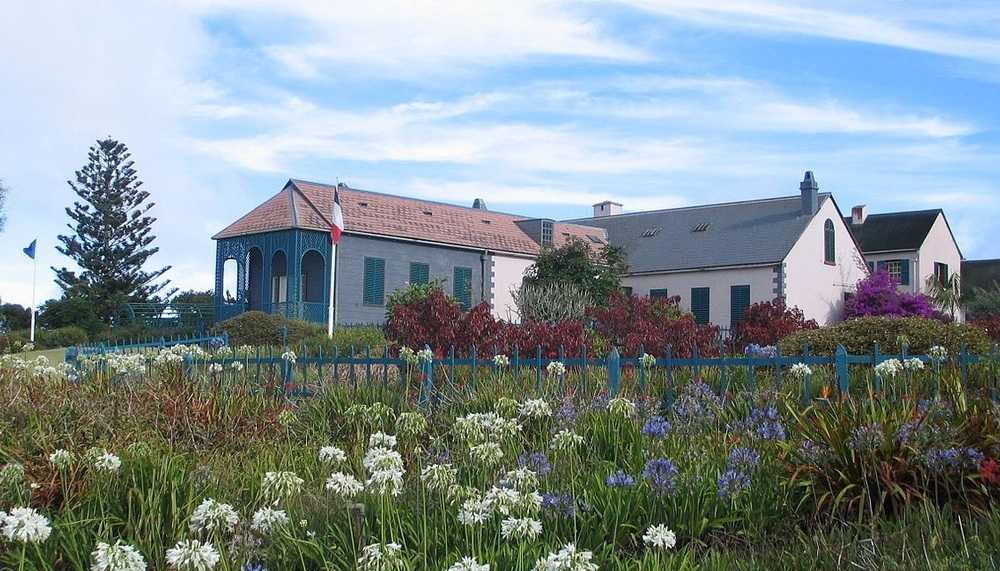Saint Helena, Ascension and Tristan da Cunha - SH - SHN - Africa
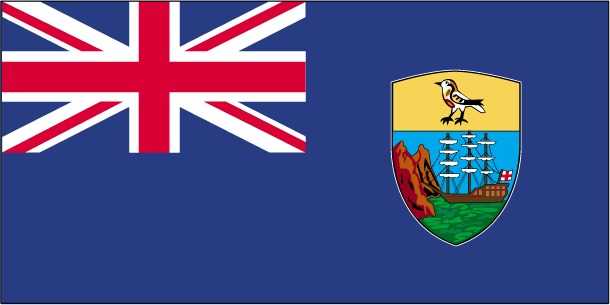
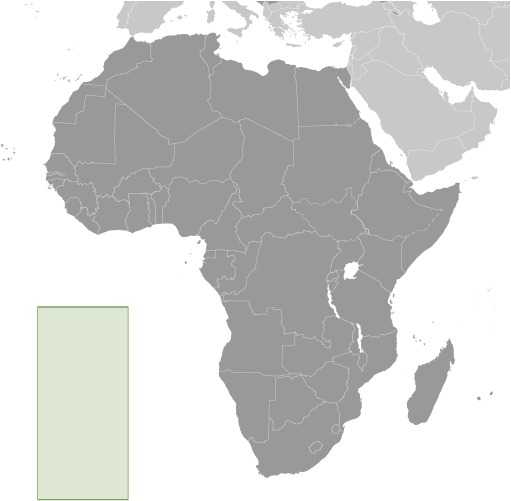
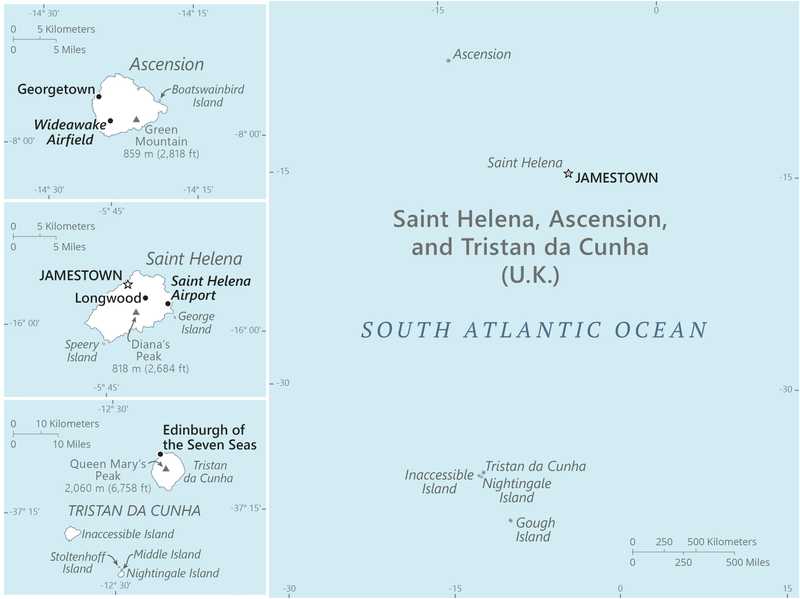
Saint Helena, Ascension, and Tristan da Cunha Images
Saint Helena, Ascension, and Tristan da Cunha Factbook Data
Dependency status
Diplomatic representation from the US
Transportation - note
Age structure
15-64 years: 66.5% (male 2,626/female 2,655)
65 years and over: 19.2% (2024 est.) (male 773/female 754)
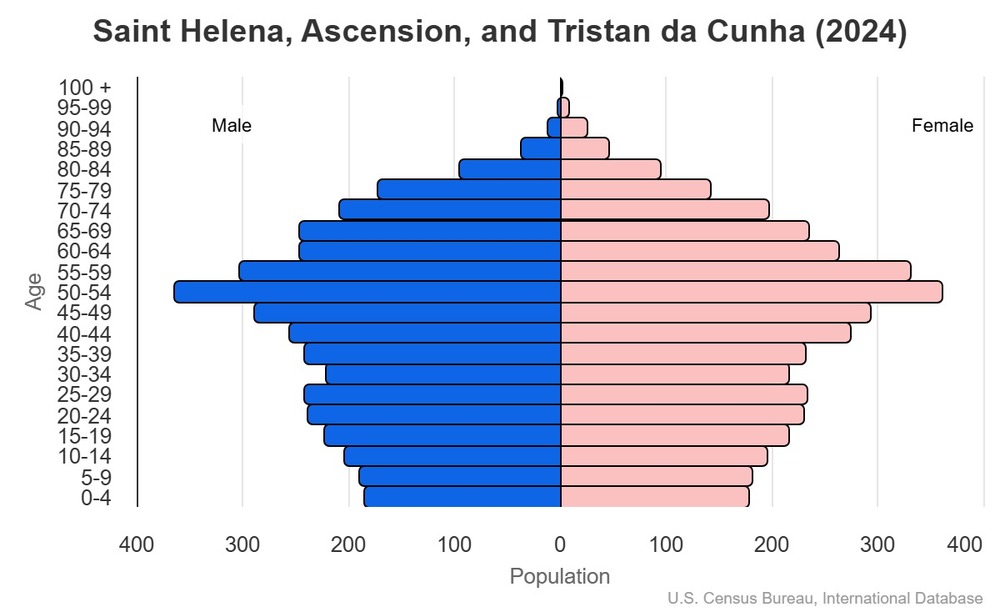
For additional information, please see the entry for Population pyramid on the Definitions and Notes page.
Geographic coordinates
Ascension Island: 7 57 S, 14 22 W
Tristan da Cunha island group: 37 15 S, 12 30 WSex ratio
0-14 years: 1.04 male(s)/female
15-64 years: 0.99 male(s)/female
65 years and over: 1.03 male(s)/female
total population: 1 male(s)/female (2024 est.)
Natural hazards
volcanism: the volcanoes of Tristan da Cunha (2,060 m) and Nightingale Island (365 m) are active
Area - comparative
Background
Saint Helena is a British Overseas Territory off the coast of Africa in the South Atlantic Ocean, and it consists of Saint Helena, Ascension Island, and the island group of Tristan da Cunha.
Saint Helena: The island was uninhabited when the Portuguese first discovered it in 1502, and the British garrisoned troops on Saint Helena during the 17th century. It acquired fame as the place of Napoleon BONAPARTE's exile from 1815 until his death in 1821, but its importance as a port of call declined after the opening of the Suez Canal in 1869. During the Anglo-Boer War in South Africa, several thousand Boer prisoners were confined on the island between 1900 and 1903.
Saint Helena is one of the most remote populated places in the world. The British Government committed to building an airport on Saint Helena in 2005. After more than a decade of delays and construction, a commercial air service to South Africa via Namibia was inaugurated in 2017. The weekly service to Saint Helena from Johannesburg via Windhoek in Namibia takes just over six hours (including the refueling stop in Windhoek) and replaces the mail ship that had made a five-day journey to the island every three weeks.
Ascension Island: This barren and uninhabited island was discovered and named by the Portuguese in 1503. The British garrisoned the island in 1815 to prevent a rescue of NAPOLEON from Saint Helena. It served as a provisioning station for the Royal Navy's West Africa Squadron on anti-slavery patrol. The island remained under Admiralty control until 1922, when it became a dependency of Saint Helena. During World War II, the UK permitted the US to construct an airfield on Ascension in support of transatlantic flights to Africa and anti-submarine operations in the South Atlantic. In the 1960s, the island became an important space tracking station for the US. In 1982, Ascension was an essential staging area for British forces during the Falklands War. It remains a critical refueling point in the air-bridge from the UK to the South Atlantic.
The island hosts one of four dedicated ground antennas that assist in the operation of the Global Positioning System (GPS) navigation system -- the others are on Diego Garcia (British Indian Ocean Territory), Kwajalein (Marshall Islands), and at Cape Canaveral, Florida (US). NASA and the US Air Force also operate a Meter-Class Autonomous Telescope (MCAT) on Ascension as part of the deep space surveillance system for tracking orbital debris, which can be a hazard to spacecraft and astronauts.
Tristan da Cunha: The island group consists of Tristan da Cunha, Nightingale, Inaccessible, and Gough Islands. Tristan da Cunha, named after its Portuguese discoverer (1506), was garrisoned by the British in 1816 to prevent any attempt to rescue NAPOLEON from Saint Helena. Gough and Inaccessible Islands have been designated World Heritage Sites. South Africa leases a site for a meteorological station on Gough Island.
Environmental issues
Exports - commodities
note: top five export commodities based on value in dollars
Administrative divisions
Agricultural products
Capital
geographic coordinates: 15 56 S, 5 43 W
time difference: UTC 0 (5 hours ahead of Washington, DC, during Standard Time)
etymology: founded in 1659 and named after James, Duke of York, who would become King JAMES II of England
Imports - commodities
note: top five import commodities based on value in dollars
Climate
Ascension Island: tropical marine; mild, semi-arid
Tristan da Cunha: temperate marine; mild, tempered by trade winds (tends to be cooler than Saint Helena)
Coastline
Ascension Island: NA
Tristan da Cunha (island only): 34 km
Constitution
Exchange rates
Exchange rates:
0.805 (2023 est.)
0.811 (2022 est.)
0.727 (2021 est.)
0.78 (2020 est.)
0.783 (2019 est.)
Executive branch
head of government: Governor Nigel PHILLIPS (since 13 August 2022)
cabinet: Executive Council consists of the governor, 3 ex-officio officers, and 5 elected members of the Legislative Council
election/appointment process: none; the monarchy is hereditary; governor appointed by the monarch
note: the constitution order provides for an administrator for Ascension and Tristan da Cunha, appointed by the governor
Flag description
Independence
Industries
Judicial branch
judge selection and term of office: Court of Appeal and Supreme Court justices appointed by the governor acting upon the instructions from a secretary of state acting on behalf of the British monarch; justices of both courts serve until retirement at age 70, but terms can be extended
subordinate courts: Magistrates' Court; Small Claims Court; Juvenile Court
note: appeals beyond the Court of Appeal are heard by the Judicial Committee of the Privy Council (in London)
Land boundaries
Land use
arable land: 10.3% (2022 est.)
permanent crops: 0% (2022 est.)
permanent pasture: 20.5% (2022 est.)
forest: 5.1% (2022 est.)
other: 64.1% (2022 est.)
Legal system
Legislative branch
Maritime claims
exclusive fishing zone: 200 nm
International organization participation
National holiday
Nationality
adjective: Saint Helenian
note: referred to locally as "Saints"
Natural resources
Geography - note
Economic overview
Political parties
Suffrage
Terrain
Saint Helena: rugged, volcanic; small scattered plateaus and plains
Ascension: surface covered by lava flows and cinder cones of 44 dormant volcanoes; terrain rises to the east
Tristan da Cunha: sheer cliffs line the coastline of the nearly circular island; the flanks of the central volcanic peak are deeply dissected; narrow coastal plain lies between The Peak and the coastal cliffs
Government type
Military - note
Country name
conventional short form: none
etymology: on the feast day of Saint Helena in 1502, Spanish navigator Joao da NOVA (sailing for Portugal) sighted and named the island that now bears the saint's name; da NOVA originally named Ascension "Conception Island" in honor of the Virgin Mary, but Portuguese navigator Afonso de ALBUQUERQUE later found the island on the feast day of the Ascension in 1508 and renamed it; Portuguese explorer Tristao da CUNHA sighted the third island in 1506 and named it after himself (the name was later anglicized)
Location
Map references
Irrigated land
Diplomatic representation in the US
Internet users
Internet country code
Urbanization
rate of urbanization: 0.98% annual rate of change (2020-25 est.)
Broadcast media
Ascension Island: no local TV station; 1 local radio station and receives relays of broadcasts from radio station on Saint Helena; broadcasts from the British Forces Broadcasting Service (BFBS) available, as well as US military TV
Tristan da Cunha: 1 local radio station and receives BFBS TV and radio broadcasts
National anthem(s)
lyrics/music: unknown
history: official anthem, as a UK overseas territory
Major urban areas - population
National symbol(s)
Population distribution
Ascension: most of the population lives in and around Georgetown
Tristan da Cunha: most of the nearly 300 inhabitants live in the northern coastal town of Edinburgh of the Seven Seas
Civil aircraft registration country code prefix
Ethnic groups
note: data represent population of Saint Helena by country of birth
Religions
note: data represent Saint Helena only
Languages
Elevation
lowest point: Atlantic Ocean 0 m
Contraceptive prevalence rate
Dependency ratios
youth dependency ratio: 21.5 (2024 est.) NA
elderly dependency ratio: 28.9 (2024 est.) NA
potential support ratio: 3.5 (2024 est.) NA
Drinking water source
urban: NA
rural: NA
total: 99.1% of population
unimproved:
urban: NA
rural: NA
total: 0.9% of population (2020)
Sanitation facility access
urban: NA
rural: NA
total: 100% of population
unimproved:
urban: NA
rural: NA
total: 0% of population (2020)
Electricity access
Imports - partners
note: top five import partners based on percentage share of imports
Exports - partners
note: top five export partners based on percentage share of exports
Coal
Electricity generation sources
Petroleum
Gross reproduction rate
Ports
large: 1
medium: 1
small: 1
very small: 1
ports with oil terminals: 2
key ports: Edinburgh of the Seven Seas, Georgetown, Jamestown, North Point
National coat of arms
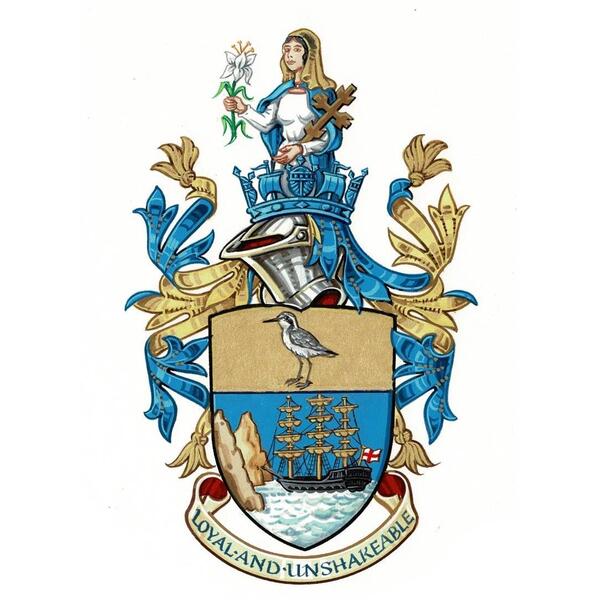
Net migration rate
Median age
male: 44.8 years
female: 45.4 years
Total fertility rate
Population
male: 3,978
female: 3,965
Carbon dioxide emissions
from petroleum and other liquids: 12,000 metric tonnes of CO2 (2023 est.)
Area
land: 122 sq km Saint Helena Island
water: 0 sq km
88 sq km Ascension Island, 184 sq km Tristan da Cunha island group (includes Tristan (98 sq km), Inaccessible, Nightingale, and Gough islands)
Airports
Infant mortality rate
male: 21.7 deaths/1,000 live births
female: 14.2 deaths/1,000 live births
Telephones - mobile cellular
subscriptions per 100 inhabitants: 74 (2021 est.)
Broadband - fixed subscriptions
subscriptions per 100 inhabitants: 17 (2020 est.)
Energy consumption per capita
Death rate
Birth rate
Electricity
consumption: 6.962 million kWh (2023 est.)
transmission/distribution losses: 1.5 million kWh (2023 est.)
Heliports
Telephones - fixed lines
subscriptions per 100 inhabitants: 74 (2021 est.)
Life expectancy at birth
male: 78.1 years
female: 83.9 years
